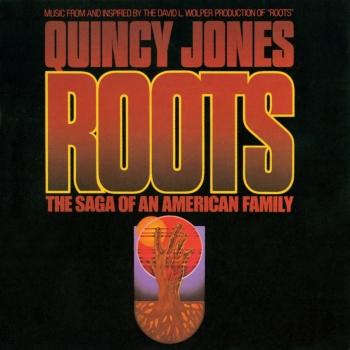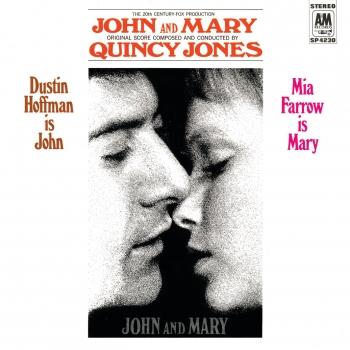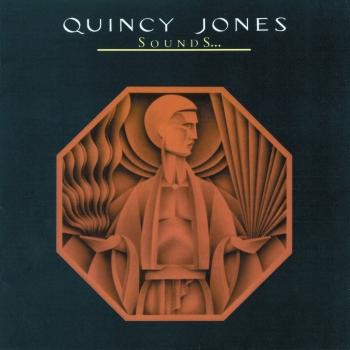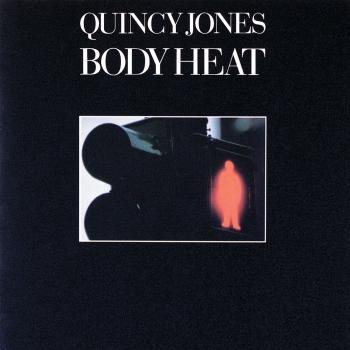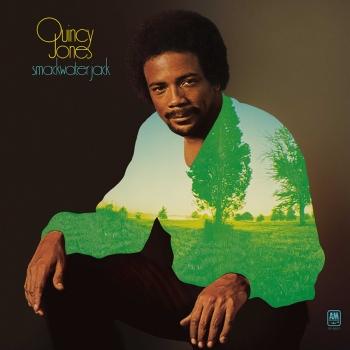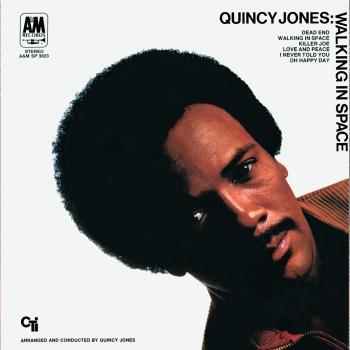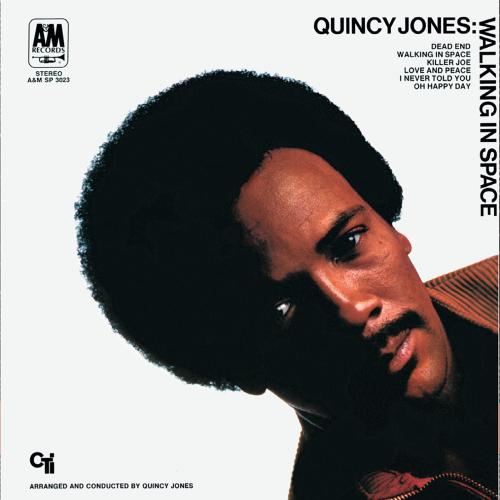
Walking In Space (Remastered) Quincy Jones
Album Info
Album Veröffentlichung:
1969
HRA-Veröffentlichung:
01.10.2021
Das Album enthält Albumcover
Entschuldigen Sie bitte!
Sehr geehrter HIGHRESAUDIO Besucher,
leider kann das Album zurzeit aufgrund von Länder- und Lizenzbeschränkungen nicht gekauft werden oder uns liegt der offizielle Veröffentlichungstermin für Ihr Land noch nicht vor. Wir aktualisieren unsere Veröffentlichungstermine ein- bis zweimal die Woche. Bitte schauen Sie ab und zu mal wieder rein.
Wir empfehlen Ihnen das Album auf Ihre Merkliste zu setzen.
Wir bedanken uns für Ihr Verständnis und Ihre Geduld.
Ihr, HIGHRESAUDIO
- 1 Dead End 03:55
- 2 Walking In Space (Album Version) 12:03
- 3 Killer Joe 05:09
- 4 Love And Peace 05:47
- 5 I Never Told You 04:17
- 6 Oh, Happy Day 03:36
Info zu Walking In Space (Remastered)
Quincy Jones’s story is extraordinary. He started in the 1950s as a jazz musician playing the trumpet and as a freelance arranger and became a mogul and one of the most sought-after record producers in the world. He has defied the boundary lines for music genres because he sees it as a whole.
In August 1974, Jones suffered a near-fatal cerebral aneurysm – the bursting of blood vessels leading to the brain. Jones required two delicate operations and six months of recuperation. Unfortunately, staples left permanently in his skull made it impossible for him to play any more. But Jones probably would not have had the impact he has had on music if he had remained a trumpet player.
His list of credentials is highly impressive: He produced the biggest-selling album in the world, Michael Jackson’s Thriller, and the largest single, “We Are the World.” He has worked with Peggy Lee, George Benson, Dinah Washington, Paul Simon, Billie Holiday, Count Basie, Dizzy Gillespie, Miles Davis, Frank Sinatra, Duke Ellington, Donna Summer, Diana Ross, Aretha Franklin, Lionel Hampton, and Leslie Gore, among many, many others. Jones has been nominated for seventy-six Grammys and has won twenty-six times. He wrote the theme music for the television shows Sanford and Son, Ironside, and The Cosby Show. He’s written thirty-four film scores for such movies as The Getaway, The Pawnbroker, the 1967 version of In Cold Blood, and In the Heat of the Night.
Jones has achieved so much in part by starting at an early age, which he did as a means of escaping a brutally hard childhood. He was just twenty-three and newly in New York when he recorded his first album, This Is How I Feel About Jazz, for Verve. It comprises six tracks, each with a strong identity, featuring, among others, Art Farmer, Charles Mingus, Milt Jackson, Phil Woods, Hank Jones, Zoot Sims, and Herbie Mann in the orchestra. It was a strong contender for the essential Quincy Jones album to own.
In 1969, Quincy Jones was thirty-six and still driven. He’d scored twelve movies in five years and wanted to go back into the studio, where there would be no film monitors to watch and images to play along with, to record a jazz album with some of his favourite musicians. It was a return to the idea of arranging and conducting a band, much the way Jones started in music by writing arrangements for the big bands of Duke Ellington, Count Basie, and Tommy Dorsey. Producer Creed Taylor also thought it was a good idea and signed him to his label, CTI.
The musical tone for the album was rock and rhythm and blues played on electric instruments and incorporated into the context of a big band. It was a strange musical mix that worked. Walking in Space received two Grammy Awards and a four-and-a-half-star review from Down Beat.
In his usual fashion, Jones attracted some of the best musicians to appear on his comeback jazz album. They included trombonist J.J. Johnson, trumpeter Freddie Hubbard, flautists Roland Kirk and Hubert Laws, Bob James on electric piano, Toots Thielemans on harmonica and guitar, Ray Brown on electric bass, drummer Grady Tate, and Eric Gale on electric guitar. The album was recorded and engineered by Rudy Van Gelder at his studio in Englewood Cliffs, New Jersey. Over the last forty years, Van Gelder’s studio has been the birthplace of many of the classic jazz albums.
At Creed Taylor’s suggestion, the first two selections, “Dead End” and “Walking in Space” are from the musical Hair, which was playing on Broadway. “Dead End” opens perfectly with a walking bass line by Ray Brown, then just a touch of guitar from Eric Gale, leading to full-blown brass and reeds. At the end, Brown improvises a beautiful bass solo that serves as a segue to “Walking in Space.” On this cut, Freddie Hubbard solos on trumpet with an authentic bebop sensibility and Roland Kirk plays reeds with a jolt of pure inspiration.
The musical centrepiece of the album is Quincy’s arrangement of “Killer Joe.” It was written by Benny Golson, his former bandmate in the Dizzy Gillespie orchestra. The song features delicious solos by Hubert Laws on flute and Freddie Hubbard on trumpet but, because of the way the song is mixed, the driving force behind it is Ray Brown’s thumping bass.
Jones’s arrangement of brass and reeds was innovative at the time and exceedingly polished, and since has become his trademark. He has a knack for setting the right tempo for a song. Musicians who have played on his sessions say that, as a conductor and arranger, Jones helps them raise the bar because his strength lies in making everyone feel special and valued. (By JAZZ.FM91)
"The protean Quincy Jones returned to the recording studio as a leader after a long stretch in Hollywood with this triumphantly contemporary big band album. He re-established himself firmly with his big band jazz base while casting a keen eye on the pop scene and the world of electric instruments (even Ray Brown is caught playing superb electric bass here). The diplomat also unveils his uncanny ability to attract some of the biggest names in jazz as sidemen (Freddie Hubbard, Roland Kirk, Hubert Laws, J.J. Johnson, Kai Winding, etc.), a quality that will be put to use again and again in the following decades. For jazz buffs, the long, dramatic title track from the then-raging musical Hair is the highlight; Hubbard positively sizzles on muted trumpet, and the brash Kirk blasts through the grooving rhythm section under heavy reverb. You also get Jones' classic, swaggering arrangement of Benny Golson's "Killer Joe" -- practically the definitive version -- and a rendition of Edwin Hawkins' freak hit "Oh Happy Day" that bursts with wit and sheer joy. This is one of the great peaks of Creed Taylor's A&M period, and it still sounds spectacular today." (Richard S. Ginell , AMG)
Quincy Jones, conductor, arranger
Hilda Harris, vocals
Marilyn Jackson, vocals
Valerie Simpson, vocal solo on "Walking in Space"
Maretha Stewart, vocals
Freddie Hubbard, trumpet
Lloyd Michaels, trumpet
Dick Williams, trumpet
John Frosk, trumpet
Marvin Stamm, trumpet
Snooky Young, trumpet
Jimmy Cleveland, trombone
J.J. Johnson, trombone
Alan Raph, trombone
Tony Studd, trombone
Norman Pride, trombone
Kai Winding, trombone
Joel Kaye, reeds
Roland Kirk, reeds
Hubert Laws, reeds
Jerome Richardson, reeds
Paul Griffin, piano
Eric Gale, electric guitar
Ray Brown, double bass
Grady Tate, drums
Chuck Rainey, bass on "Love and Peace"
Bob James, electric piano
Hubert Laws, flute, tenor saxophone
Toots Thielemans, guitar, harmonica
Bernard Purdie, drums
Produced by Creed Taylor
Digitally remastered
Please Note: We offer this album in its native sampling rate of 96kHz, 24-bit. The provided 192kHz version was up-sampled and offers no audible value! Matter of fact, it's a DSD extracted from SACD converted to PCM and up-sampled to 192kHz.
Keine Biografie vorhanden.
Dieses Album enthält kein Booklet









